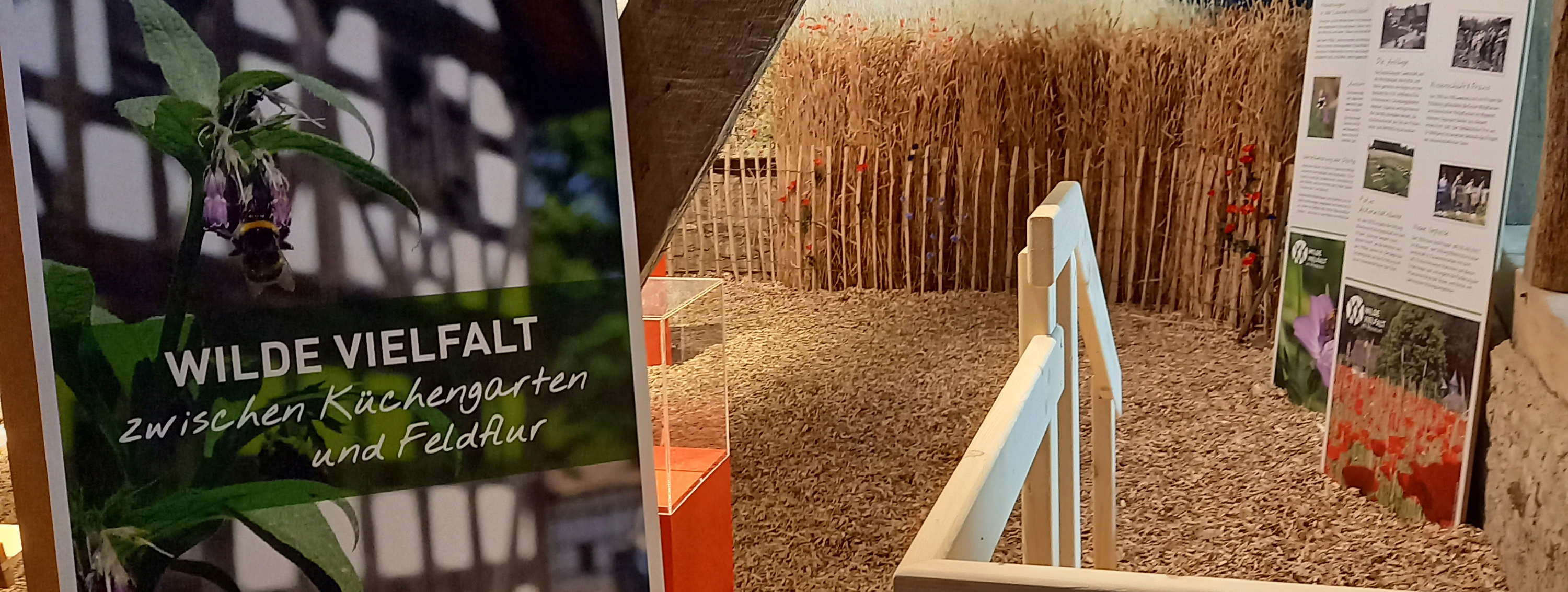Stadt, Land, Garten
Stadt, Land, Garten - Wilde Vielfalt zwischen Küchengarten und Feldflur
from March 27, 2022
From the pre-industrial kitchen garden to company settlements and allotment gardens to urban gardening: the exhibition highlights how the meaning and appearance of kitchen gardens have changed. The subjective side of gardening plays a major role here. In concise words, gardeners describe their motivations as well as the burden and pleasure of gardening. Museum guests learn about old and modern crops and can follow the growth and ripening of beans, raspberries or potatoes over the course of a gardening year.
Historical garden tools or guidebooks show an astonishing continuity in gardening. Gardening means being active! The exhibition encourages young and old to do this: content is conveyed through puzzles, cranking or searching.
Outside there is the opportunity to participate in the community box, planting, weeding, watering and harvesting. Picks, shovels and watering cans are available in the cupboard in front of the exit.
The LVR open-air museum in Kommern offers public tours through the exhibition, an accompanying educational program.
Stadt, Land, Garten
When it's green, blooming and growing outside, the museum guests of the LVR open-air museum in Kommern are always happy about the historical house gardens as well as the "modern" ornamental gardens in the area.
Today, the museum farmers, housekeepers and volunteer garden sponsors continue what used to be everyday life for people (not only) in rural Rhineland. The families supplemented their diet with fruit and vegetables that they grew themselves. This was vital.
In the cramped cities, which grew rapidly as a result of industrialization after 1850, many wished for a garden where they could harvest and enjoy their scarce free time. Use of fallow land, allotment gardens and settlements with gardens behind the house emerged.
In the "economic miracle" of the post-war period, kitchen gardens gradually gave way to ornamental and leisure gardens. A turnaround can be observed today. More and more people are interested in organic vegetable cultivation and are looking for a balance between the city and everyday work. Small gardens are in demand again. And in urban gardening, young people are experimenting with beds in mobile containers on urban wasteland.
Wild variety in the museum
As part of "Stadt, Land, Garten", an independent room presents "Wilde Vielfalt im Museum" as part of the project of the same name. This exhibition area looks at ecological initiatives since the museum opened 60 years ago and looks at the value wild herbs still have for us today. Because many "weeds" that grow in gardens, along paths and in fields are valuable crops.
What was taken for granted in grandmother's day is now being rediscovered: wild herb products such as dandelion lemonade, detergent with soapwort and clothes made from nettle fabric are all the rage. However, many of the wild plant species that used to be typical of fields and villages are now endangered. These rare species are preserved in the “Wilde Vielfalt im Museum” project.
The Rheinische Kulturlandschaft Foundation is carrying out the project, which started in 2020, as project sponsor together with the open-air museum as a cooperation partner. In two plant boxes in the outdoor area, visitors can discover the variety of plants grown from regional seeds.






